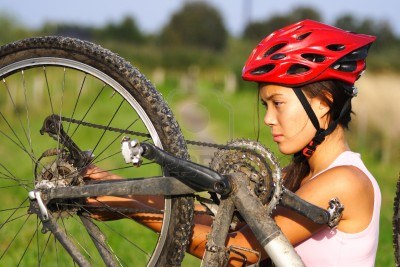Top 7 Bicycle Maintenance Tips
22 March 2013
The modern bicycle is a versatile machine that provides a wide range of options like recreation, transport, employment, fitness and competition. Cycling also offers health benefits that include; leg strength, improved cardiovascular functioning, mood improvement, weight management, coordination and balance. For people living in seasonal climates, bicycles are left dormant during winter and re-emerge in spring. Therefore, it is good to spend time getting the bicycle ready before you head out for your ride. Protect your bubble, a specialist in bicycle insurance, provides some 7 basic maintenance tips that ensure an efficient and safe ride.
Bicycle Maintenance Tips

1. Keep the bicycle clean
A bicycle is a collection of moving parts that come into contact with grime, debris and grime and are bound to wear and tear. If left unclean, these factors deteriorate your bicycle's components. Therefore, proper hygiene is the ideal defence against breakdowns. Water from high pressure pipes can damage the sensitive parts of the bicycle. Most of the dirt can be cleaned using a small piece of cloth or a wet rag while others must be cleaned through buffing, re-lubricating and brushing. Your bicycle's cleaning schedule should depend on how often, fast or hard you ride the bicycle. The main cleaning supplies are water, soap, brushes and a clean rag.
2. Ensure the tyres are properly inflated
Check the condition of the tyre and the air pressure. Maximum air pressure is essential for a good road grip, stability, longevity of the tyre and comfort. Under inflated tyres adversely affect handling of the bicycle, wear unevenly and fail due to overheating. Always insist on using the track pump with a pressure gauge to inflate the tyres. Look for a number and PSI letter that tells you how much air you ought to put in.
3. Lubricate the bike
Keeping the bicycle lubricated prevents it from friction that causes wear and tear, attack by corrosion and rust that damages exposed metal and freezing up. However, over lubrication may lead to poor performance and attract dirty as well. Bicycle parts that need to be lubricated include the chain, bearing systems and brake and derailleur cable, assemblies and levers. The lubricants include bicycle oils and greases. Bicycle greases are used to lubricate bearing systems like the headsets and the hubs and are thicker than oils. Bicycle oils on the other hand lubricate thinner thread bolts, derailleur, brakes and chains. Always use the lubes that are designed for the riding conditions and weather. Dry areas use lighter lubrication oils that do not pick up much dirt while rainy areas use more durable oils. Wet areas will require regular lubrication.
4. Inspect the brakes
Brakes are essential since they control the speed of your bicycle thus reducing the chances of having an accident. They assist the rider to manoeuvre easily while turning, avoiding obstacles riding down or up hill. Check the brake pads that rub against the metal rim. Using a flash-light, access if the pads are wearing evenly. In case of uneven wear, you might have to change the brakes. You also squeeze the brake lever on the handlebars and watch the brake pads. The brakes must hit the rim at the same and if not, adjust them using the brake arm tension screw. Silence the screeching brakes through cleaning and drying them. If there is too much slack in the cable when you pull the pad, add tension through rolling out the barrel adjuster located at the end of the lever. This will ensure that the brakes react more quickly.
5. Secure the bolts
Bicycles are held together by bolts that should always be properly tightened. Poorly tightened bolts can cause serious wear and tear, poor bike performance and be a safety hazard.
6. Adjust the saddle
If you experience sore bum syndrome, experiment with the saddle as you raise it or tilt it to get the right riding style. Sore knees when riding result from a low set saddle.
7. Ensure that the wheel is true
Spin the wheels when the bicycle is upside down. If they wobble from one side to the other, they require truing. It is a simple step that requires special equipment. Therefore, visit the bike shop and pay a small fee.
Conclusion
Bicycle maintenance is essential since it ensures a smooth ride and prolongs the life of your bicycle. If you follow the above simple maintenance steps, you will always have a smooth ride and keep you bicycle safe for long.